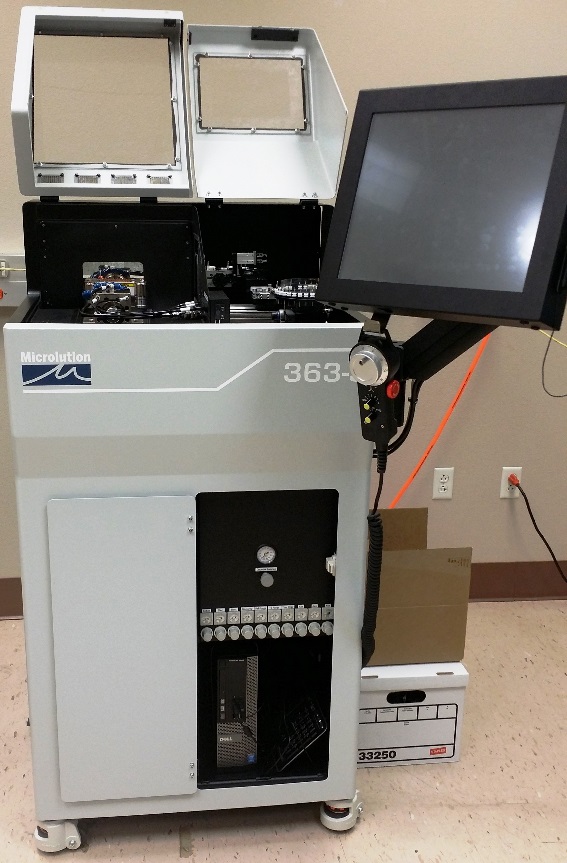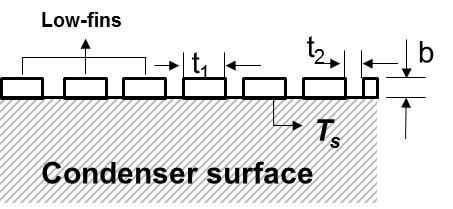CBET-1504174: MRI Acquisition of a CNC Micro-Milling Workstation
 The Frank H. Dotterweich College of Engineering at Texas A&M University-Kingsville (TAMUK) has received a $171,736 grant (CBET-1504174) from the National Science Foundation for the acquisition of a Computer Numerical Control (CNC) micro-milling workstation. Faculty members in multiple Departments at Texas A&M University-Kingsville (TAMUK) and Texas A&M International University (TAMIU) worked together for the proposal to better serve research and educational needs of two Hispanic serving institutions in South Texas. The miniaturized fabrication is emerging as a leading contender to meet increasing demands of highly efficient and compact systems that allow scientists or engineers to break through the barriers of developing innovative technologies in many applications.
The Frank H. Dotterweich College of Engineering at Texas A&M University-Kingsville (TAMUK) has received a $171,736 grant (CBET-1504174) from the National Science Foundation for the acquisition of a Computer Numerical Control (CNC) micro-milling workstation. Faculty members in multiple Departments at Texas A&M University-Kingsville (TAMUK) and Texas A&M International University (TAMIU) worked together for the proposal to better serve research and educational needs of two Hispanic serving institutions in South Texas. The miniaturized fabrication is emerging as a leading contender to meet increasing demands of highly efficient and compact systems that allow scientists or engineers to break through the barriers of developing innovative technologies in many applications.
The purchased CNC micro-milling workstation is specifically designed for fabricating high precision, micro-scale small parts and structures directly using several materials including plastics and metals (Aluminum, Copper, Steel, and Stainless Steel) in cost effective and fastest way with the capability of ±1 micrometer positioning accuracy and sub-micrometer repeatability. Direct fabrication of micro-scale parts and structures opens up opportunities to develop complex micro-scale systems while eliminating design restrictions, maintaining accuracy and functionality. The workstation enables to develop new research projects and broaden the research capabilities of two institutions in research areas of micro fabrication, microfluidic devices, and bio-micro mechanical electrical systems (Bio-MEMS), and micro/nano-scale heat exchangers.
The newly introduced CNC micro-milling machine will draw more undergraduate and graduate students into multidisciplinary STEM programs provided by the institutions.

3-axes, high-precision workstation with software integrated user interface:
- Dimension
- Foot Print: 635 mm × 711 mm × 1346 mm (Width, Depth, and Height)
- Weight: 320 kg without accessories
- Ground: precision natural granite base
- Horizontal machining configuration
- Electrical spindle system with maximum 50,000 RPM
- Automatic and manual execution of g-code program
- Work with all major CAM ( computer Aided Manufacturing) package
- Encoder: Heidenhain glass scales
- Coolant: flood and air blast
- Axis of motion
- Ironless linear motors with zero backlash
- Accuracy of ±1 μm with submicron repeatability
Automatic workpiece pallet system:
- Work Volume: X: 63 mm, Y: 63 mm, and Z: 63 mm
- Erowa palletized workhold system
- Materials
- Plastics: delrin, torlon, PEEK, vespel, polycarbonate, and Acrylic
- Metals: steels, stainless steels, aluminum, and brass
- Ceramics
Automatic tool changing and sensing systems:
- Tool size: 4.00 mm – 10 μm
- Tool magazine: hold up to 35 tools
- Robotic tool transfer with direct tool handling
- Direct shank tool camping and support up to 4 mm in diameter tools
- Automatic laser tool sensing
- Length-accuracy: ±1 μm for tools 3.0 mm to 100 μm in diameter
- Diameter-accuracy: ±2 μm for tools 3.0 mm to 100 μm in diameter;
Power and Utility requirements:
- Power: 120 V, 60 Hz, and less than 25A with NEMA plug
- Utility: compressed Air (90 psi)
Personal Computer and monitor for the workstation
Computer:
- i5-3570 processor , 8 GB RAM, 16X DVD +/-, RW drive, 250GB hard drive or higher, Win 7 Pro, warranty: five year
- 17 inch touch screen monitor for user interfaces

Micro/nano-scale surfaces and structures for high performance fluid transportation and two-phase heat transfer applications.
- High Performance Fluid Transportation
- Two-Phase heat transfer Applications

Micro Fluidic Device
- Design and Fabrication of Microfluidic Network
- Experimental Investigation of Fluid Behavior
- Usage of microfluidic device for Drosophila eye development and degeneration studies
